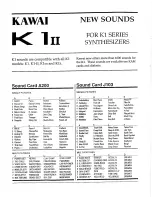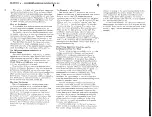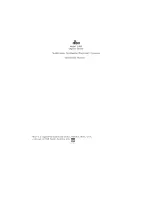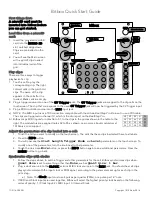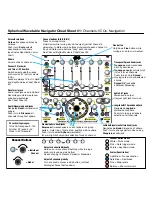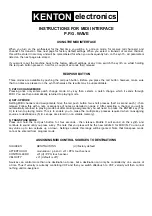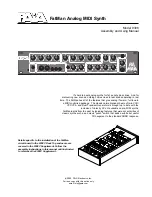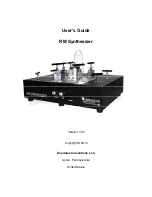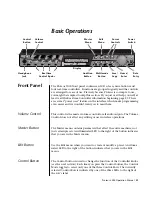
NI PXIe-5653 Calibration Procedure
|
© National Instruments
|
5
Test Conditions
Follow these guidelines to optimize the connections and the environment during calibration:
•
Keep cabling as short as possible. Long cables act as antennas, picking up extra noise that
can affect measurements.
•
Verify that all connections, including front panel connections and screws, are secure.
•
Maintain an ambient temperature of 23 °C ±5 °C.
•
Keep relative humidity between 10% and 90%, noncondensing.
•
Allow a warm-up time of at least 30 minutes after the chassis is powered on. The warm-up
time ensures that the NI 5653 is at a stable operating temperature.
•
In each verification procedure, insert a delay between configuring all devices and acquiring
the measurement. This delay may need to be adjusted depending on the instruments used
but should always be at least 1,000 ms for the first iteration, 1,000 ms when the power level
changes, and 100 ms for each other iteration.
•
Perform self-calibration on the NI 5653.
•
Plug the PXI/PXI Express chassis and the calibrator into the same power strip to avoid
ground loops.
•
Use a torque wrench appropriate for the type of RF connector that you are using.
NI recommends a 0.565 N · m (5 lb · in.) wrench for SMA connectors and an 0.90 N · m
(8 lb · in.) wrench for 3.5 mm connectors.
•
Connect the frequency reference source to the REF IN connector on the back of the
PXI Express chassis with a standard BNC (m)-to-BNC (m) cable. This connection replaces
the connection from the NI 5653 REF OUT (10 MHz) connector to the PXI Express chassis
REF IN connector, if present.
•
Ensure that the PXI/PXI Express chassis fan speed is set to HIGH, that the fan filters, if
present, are clean, and that the empty slots contain filler panels. For more information, refer
to the
Maintain Forced-Air Cooling Note to Users
document available at
ni.com/
manuals
.
Initial Setup
Refer to the
NI 5665 RF Vector Signal Analyzer Getting Started Guide
for information about
how to install the software and hardware and how to configure the device in Measurement and
Automation Explorer (MAX).
Self-Calibrating the NI 5653
Note
No signal connections are needed for self-calibration.
You can self-calibrate the NI 5653 using the self-calibration features provided with NI-RFSG.





















